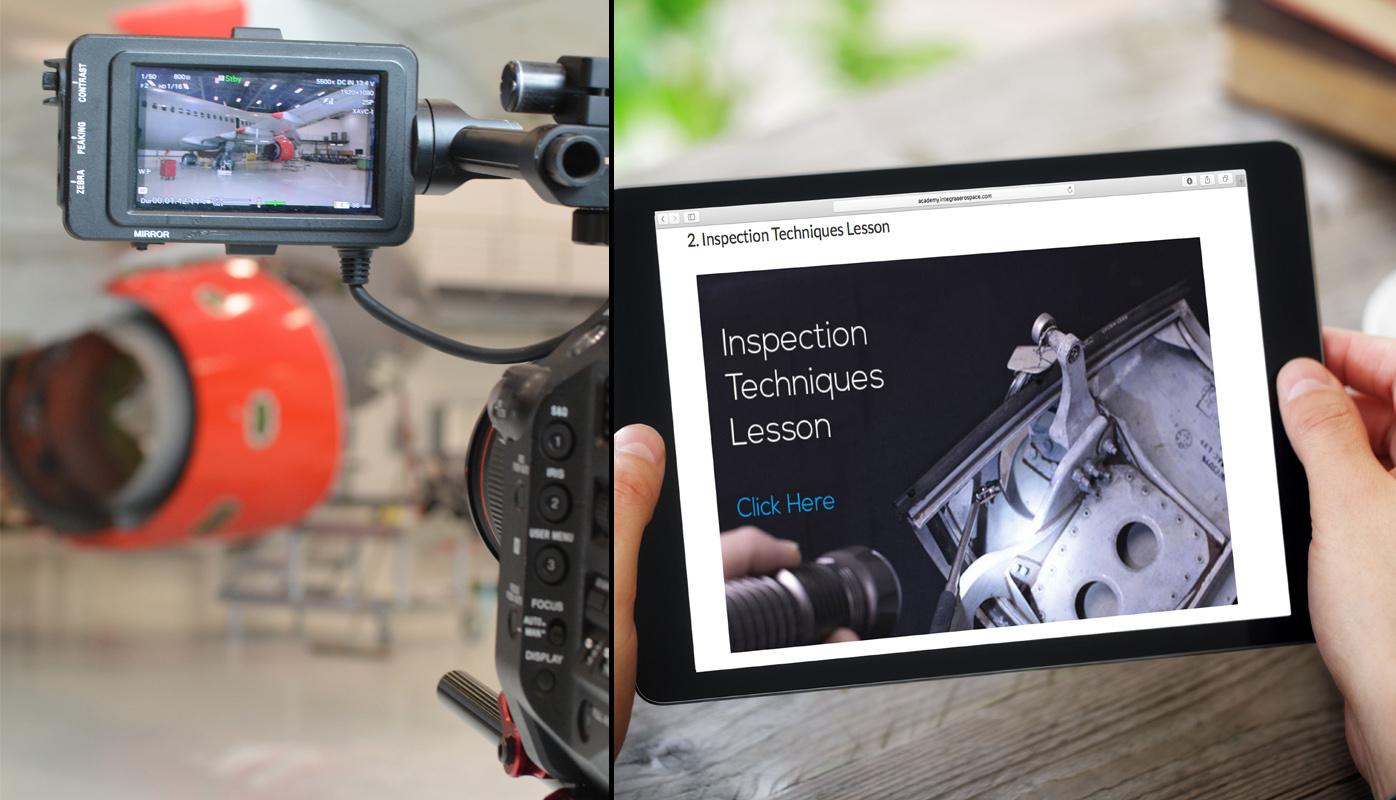
As aviation maintenance training moves to an online format during the novel coronavirus pandemic, a UK-based company specializing in the creation of blended learning products is looking to help schools and MROs provide more engaging, tailored training content.
Started in 2014 by a former aircraft engineer and technical instructor at KLM UK Engineering, Integra Aerospace focuses on the process of how to best split up curriculum between online training and physical classrooms—called blended learning. According to the company, the learning style combines the advantages of both environments, enabling students learn at their own pace while providing more engaging online content such as videos and interactive modules.
According to Sam Lee, director of Integra Aerospace, the idea is to strip out baseline level theory and deliver it virtually in a way that doesn’t entail an instructor just going through PowerPoint slides via a videoconferencing platform like Zoom. “We can do so much better than that,” says Lee. “If you’re just producing videos or delivering live virtual classrooms when you’re only narrating over PowerPoint then this is not continually improving your material. You want to be looking at how best your students can learn from you and engage them with highly interactive classroom sessions.”
Integra Aerospace works closely with customers to create tailored blended learning content ranging from Part 147 aircraft type training for technicians to compliance or human factors training for various roles within an MRO organization. Once Integra Aerospace has gathered information about training needs, assumptions about how it will be delivered and necessary background knowledge about the subject matter, it begins the process of designing the actual blended learning product—such as storyboarding for videos, online content and classroom-based activities. In the final development phase, it travels to a customer site to produce videos and uses tools such as open-source learning management system Moodle and e-learning creation app Articulate Rise to build out the virtual learning environment.
For instance, Integra Aerospace helped SR Technics transition a two-day, theory-heavy course on damage assessment to a blended learning format. Once Integra Aerospace determined the most effective way to deliver the training, it traveled to SR Technics’ Zurich base to film an engineer performing the full damage assessment process on an aircraft. The videos were then used in the virtual learning environment, which was created to operate like an interactive website.
Lee notes that another advantage of blended learning is that it can be tailored to an individual student’s knowledge and skill level. Students struggling with specific concepts can take advantage of self-study material while others with higher levels of prior knowledge can move at a quicker pace. Once students have completed self-study theory material, they will be better prepared for lessons in the physical and virtual classroom. Lee says this makes blended learning ideal for teams with varying levels of experience and prior knowledge.
While COVID-19 has certainly demonstrated the plausibility of virtual training, Lee says it has also created the need for Integra Aerospace to pivot somewhat due to existing prospects drying up. The company is currently focusing on providing value to training organizations rather than serving as a competitor to them. It is now refining its products to teach trainers and organizations how to transition traditional classroom-based courses online and how to create a “highly-engaging and interactive virtual classroom”—including sending out weekly training tip emails to individuals and organizations attempting to navigate the new normal for learning.
“We’re not trying to replace what they do,” says Lee, “but trying to go in as somebody who has a little bit of experience and possibly is a little bit further ahead and saying, ‘What can we do to help?’”





